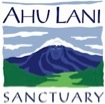ADOPT A TREE
Hawaii
Great for Memorials, New Babies, Weddings, Birthdays & Environmental Gifts
Planting Koa Trees for the Adopt A Tree Program
Below we outline the procedure utilized to germinate koa seed, grow koa seedings, plant the seedlings, and track the seedlings for the Adopt-A-Tree program.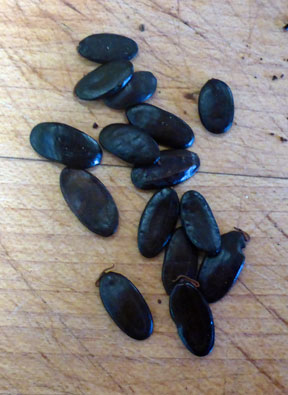 |
Koa seeds look like small watermelon seeds. They are hard and have an outer layer that is impervious to water. Koa seeds can remain dormant for decades in the soil until something "wakes them up". |
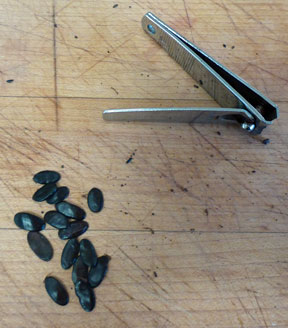 |
The method we use to "wake up" koa seeds is to nick the seeds with a nail clipper. |
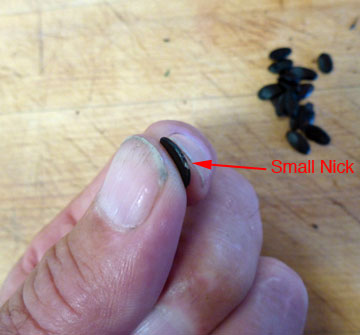 |
Just a tiny nick on the edge of the seed is all it takes. If you nick too deeply, the seed will likely die. |
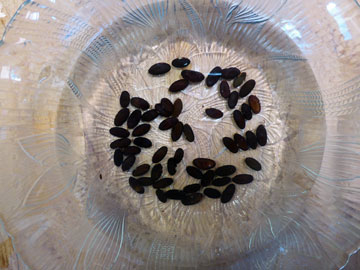 |
Here's a bowl of about 60 koa seeds that were just nicked. |
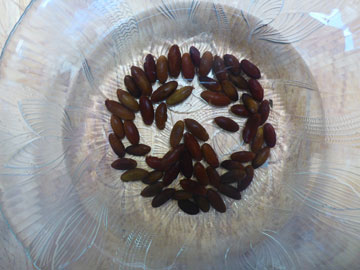 |
Here's a bowl of koa seeds that have soaked for 24 hours. Note how they have swollen nicely. |
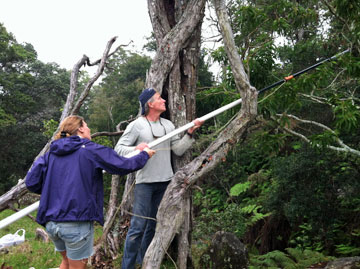 |
Koa seeds are collected on our land using long poles with snippers at the end. The seed pods can also be collected from the ground after they fall, but most such seeds get eaten by tiny beetles if you don't get to them in time. |
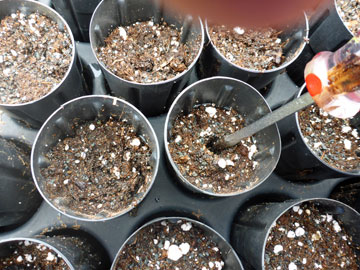 |
Once the koa seeds have soacked for 24 hours we plant them in "dibble tubes" or other nursery containers filled with a special soil mix containing fertilizers and rhizobia bacteria. Rhizobia bacteria are microorganisms that evolved with koa trees and form root nodules. The bacteria fix nitrogen from the air and make it available to the koa trees and to other plants surrounding the koa trees in the forest.
Here we are digging a shallow hold with a screw driver. |
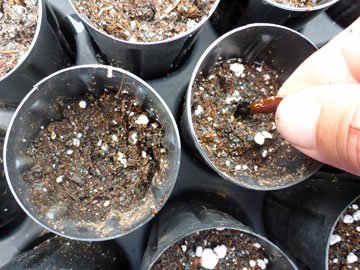 |
The swollen seed is dropped into the hole. |
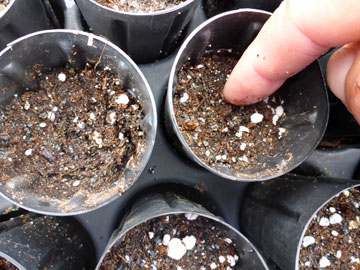 |
The soil is gently patted down. |
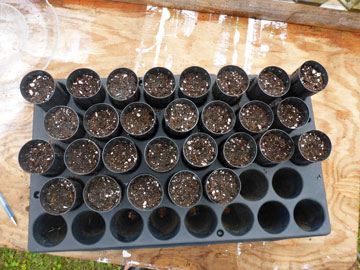 |
Now we wait for the seedlings to emerge (2-7 days or more). |
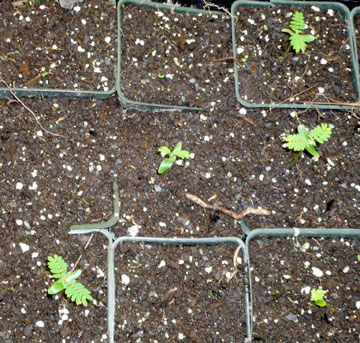 |
Here you can see the tiny seedlings beginning to emerge from the soil. |
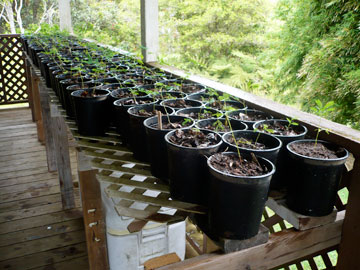 |
These koa trees have been "stepped up" to six inch containers. |
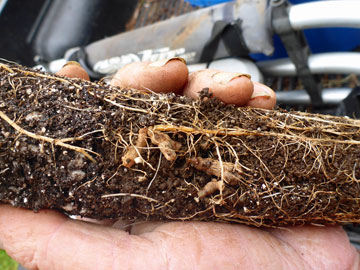 |
Here's a seedling that has been taken out of its dibble tube in preparation for planting. You can see large nodules. The seedling smells like ammonia, which is a sign that the nitrogen has been fixed by the rhizobia.
We collect some of these nodules from some trees and seedlings. Then we blend the nodules with water and spray the "rhizobia water" on newly planted seedlings and larger seedlings as well. This helps the trees establish good healthly colonies of rhizobia. |
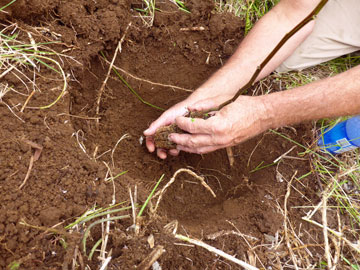 |
Here we've gently removed the seedling from the dibble tube and are placing it in a freshly dug hole. In the bottom of the hotel we've put composted soil that's rich in nutrients to give the koa tree a boost in its early life. |
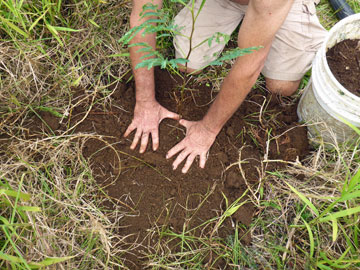 |
We gently pat down the soil after applying more compost on the top. |
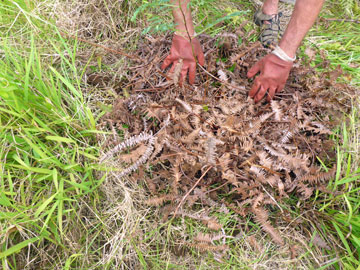 |
Here we are covering the area around the koa tree with mulch, in this case some Hawaiian fern debris. Mulch does two things. First it helps prevent grass and other plants from "encroaching" on the young koa tree. Second, it provides nutrients to the seedling as the mulch deteriorates. |
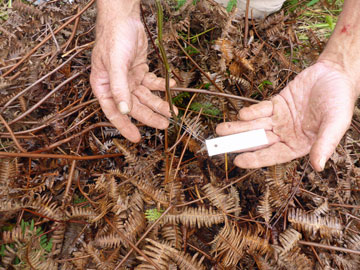 |
Here we apply an aluminum tag to the tree to help us identify it in the future. The tag is "etched" by writing on it with a pen. The indentation in the aluminum tag will still be able to be read in 10-20 years. |
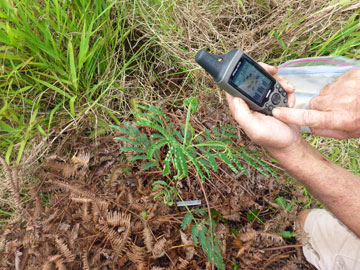 |
Next we take the GPS location of the tree. The GPS location goes on Adopt-A-Tree certificates, and into our database so we can find specific trees in the future. |
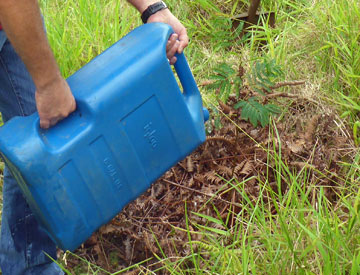 |
Next we give the newly planted koa seedling a big drink. If the weather remains dry, we will return with water jugs to water the new seedlings and give them a head start. |
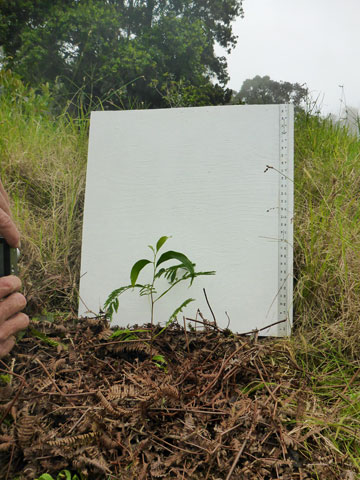 |
Finally, we take a photograph of the newly planted seedling. This is the photo that appears on Adopt-A-Tree Certificates. We use a white board with a measuring stick on the side behind the tree. Using a white board as a backdrop is important, because otherwise it would be very difficult to make out the seedling against a background of grass and other forest plants.
Finally (not shown) we take the GPS coordinates of the tree just planted and record it in our Adopt-A-Tree database. |
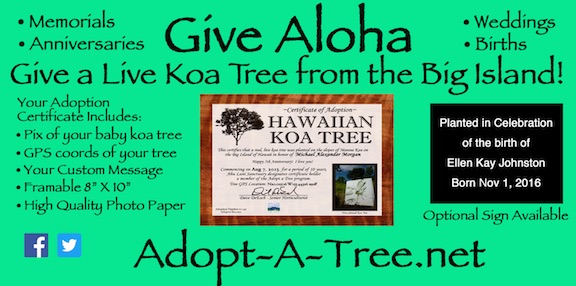
Have you seen our ad in Hawaiian Airline's inflight magazine?
